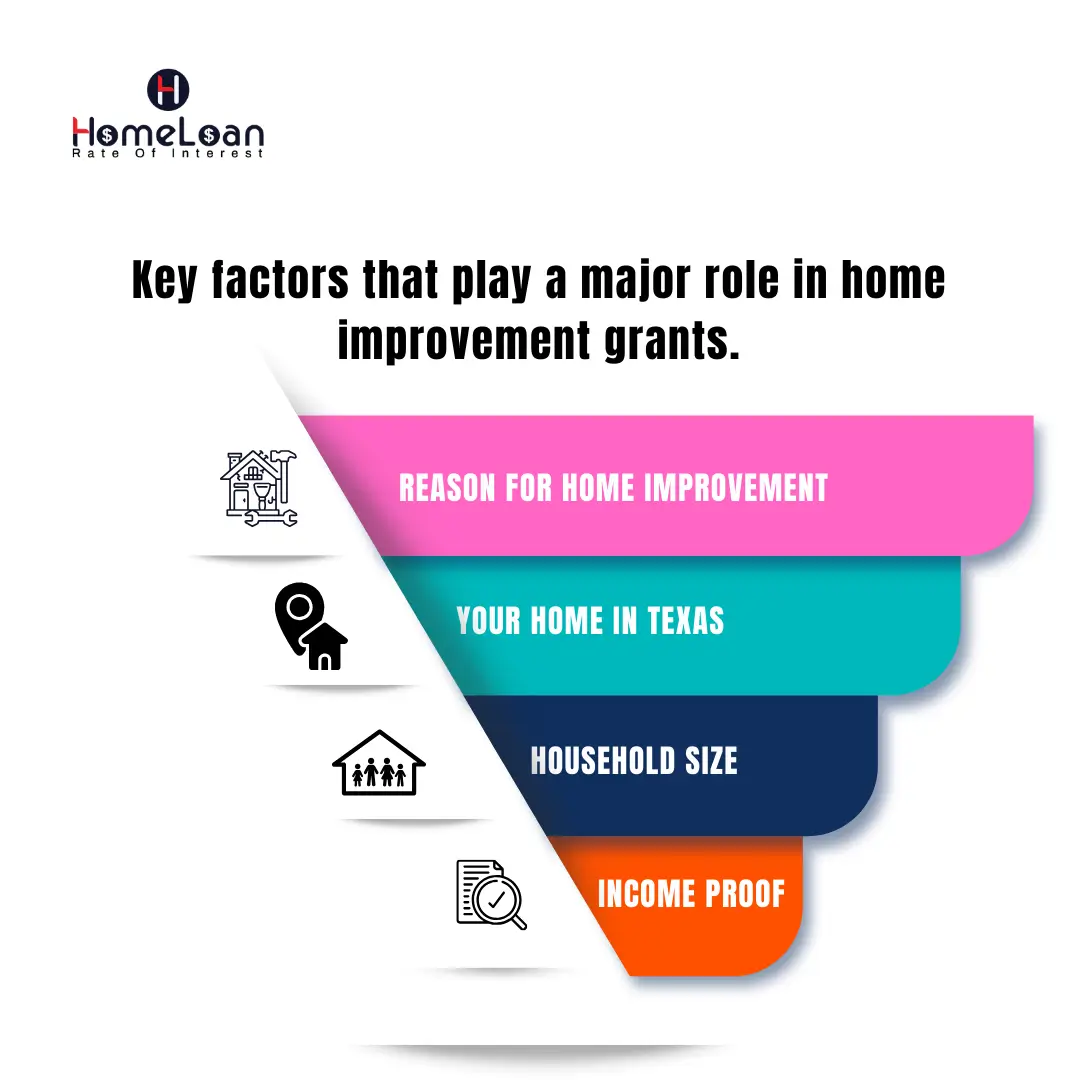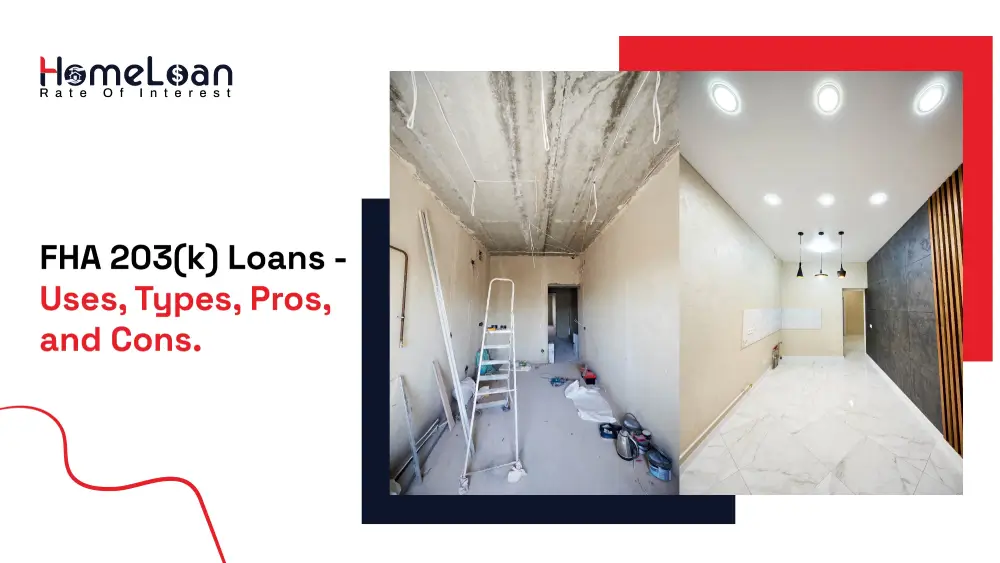
- 02 Nov, 2023
Who Qualifies for Government Grants for Home Improvements in Texas?
8 efficient ways to utilize home improvement grants
Owning a home in Texas comes with its fair share of advantages. Residents pay lower taxes, can make an affordable living, and above all, living in Texas means lots of sunshine.
However, a home is beyond walls and roofs. Whether you’re residing in the urban neighborhoods of Houston or on the pleasant hillside of Austin, you might have had your fair allotment of home projects on the to-do list.
You don’t have to tackle these projects alone. In this blog, we will understand how government grants lend a helping hand to your home improvement projects and find out if you qualify for the same.
What are Texas home improvement grants?
Being a homeowner can be a real job as there’s always something on your to-do list when it comes to repairing or replacing things in your home.
Whether it’s replacing your old windows into stronger ones, fixing that leaky roof, upgrading your exteriors to improve security, or making it more energy efficient, qualifying yourself for a home improvement grant will help you save thousands of dollars.
With the help of these home improvement grants, you can maintain and upgrade your living spaces, making them safer, more comfortable, and energy efficient.
All you need to know about government grants
Government grants help in funding your home improvement projects and they can be taken only for the purpose of improving your home, as these grants can’t be used for personal use.
There are 4 basic types of grants offered by the government:
-
Federal grants
They are provided by various federal agencies such as the Department of Housing and Urban Development.
-
State grants
These grants are offered to the projects that happen within a state in the U.S. Our Texas home improvement government grants fall under a state grant.
-
Local grants
This includes the grants offered by city and county authorities to address community-specific needs, such as infrastructure development for community safety and social services.
-
Foundation grants
Foundations operating independently receive funding from government sources to support various charitable and research projects.

Best Texas home improvement grant programs
You just got lucky as a resident of Texas! There are several home improvement grant programs available to assist homeowners of all ages to improve their homes according to their needs.
Please note that programs differ by county and city. Make sure you research and compare the best available programs in your county or city.
These programs are claimed to be the best for a reason as they are designed to perfectly fit the needs of the homeowners. Time to find the one that suits your situation best:
Texas Community Development Block Grant (CDBG)
The aim of this grant is to develop strong communities so they provide grants to support community development activities, including home improvement projects.
Their main eligibility factor is income and the impact of the specific project. It is mostly offered to people who belong to the low and moderate-income levels.
Funds from these grants help homeowners address immediate home improvement issues. For eg- Pressing issues like broken plumbing systems, or deteriorating roofs.
Weatherization Assistance Program (WAP)
This program helps families with low income to make their homes energy efficient with the goal of reducing utility bills and increasing comfort.
Residents of Texas experience a good amount of sunny days. However, during certain times the weather is unpredictable and it is important to make your home energy efficient.
The WAP helps in the weatherization of the homes of low-income elderly individuals and disabled adults. As a Texas resident, in order to be eligible:
-
You need to be above 60 years of age.
-
You are a part of a family with one or more disabled members.
-
You are a part of a family with children at or below the age of 5.
Grants are provided for weatherization improvements, such as insulation, weatherstripping, and energy-efficient appliances.
The program prioritizes households with the greatest energy needs and provides grants where the impact of the improvements extends beyond individual homeowners' needs contributing to the energy footprint of the state.
-
Texas Department of Housing and Community Affairs (TDHCA)
The TDHCA program offers affordable housing opportunities and energy assistance programs to Texans who qualify based on their income level.
This program offers the HOME Investment Partnerships Program, which provides grants to local governments and nonprofit organizations.
These organizations will collect these grants and offer assistance to homeowners for home repairs and improvements.
Texas Home Repair Program
HUD’s Home improvement loan programs provide homeowners with the funds needed to make home repairs and modifications.
The program acts as a lifeline for homeowners who find it difficult to meet with even basic home repairs. Funds are provided for essential repairs that address the safety concerns of the house.
Do you qualify for Texas home improvement grants?

Eligibility criteria vary as there are 50+ programs for different counties and cities. However, there are some common eligibility requirements that are mandatory in every county. They are:
Income
Most of the grants out there require you to submit proof of income as these grants are aimed at assisting low and moderate-income families.
It helps individuals who face financial constraints to fund their home improvement projects.
Household size
The size of your household is another factor that influences your eligibility for certain grants.
Depending on the household size, the income limits vary. By understanding the size of each household, the government can provide equal opportunities for all.
Larger households comparatively hold extra improvement projects compared to smaller ones.
Your financial situation is assessed based on the household size and it not only includes immediate family members but also any dependents who are currently sharing your residence.
Reason for home improvement
Depending on the home improvement requests, the grants will have specific requirements. For example - The eligibility criteria to fix a leaking roof differs from that of homes in need of energy-efficient upgrades.
Therefore, before applying for a specific grant, it is important to review and understand any additional requirements that apply to your home improvement projects.
To summarize the qualifications for a Texas home improvement government grant, anyone who can show reliable proof of income and establish the appropriate reasons to opt for a grant can be eligible.
Remember to ask for grant-specific requirements in order to become fully qualified.
8 efficient ways to utilize home improvement grants
Making good use of government grants can help you maximize the benefits of the financial resources you receive in order to improve your home.
Here are 8 smart ways to make the most of home improvement grants:
Prioritize immediate repairs
You need to start with fixing urgent repairs. It will make sure that you avoid any major problems in the future where you end up spending extra money out of your pockets.
Focus on issues such as leaking roofs, weak windows, faulty electrical systems, or plumbing problems. Address these issues when they are in the minor stages of repair as major repairs are expensive.
-
Install energy-efficient systems
As we are moving towards an unhealthy environment, this is the best time to invest in energy-efficient upgrades.
Along with the reduced utility bills, you will also be a contributor to the environment promoting a sustainable and environmentally friendly home.
Consider investing in energy-efficient home appliances, solar panels, and upgrading insulation.
-
Enhance your home accessibility
Certain grant programs offer specific provisions for accessibility modifications and it is useful for households with elderly or disabled family members.
This involves adding ramps, and handrails or widening the doorways for easier movement around the house with a wheelchair.
Utilize these funds to make it easier for the elders to navigate around the house without another person’s intervention.
-
Upgrade outdated systems
Check your heating, cooling systems, electrical and wiring updates. If it has been updated long back, it’s time for a new update. Use your grants to upgrade these systems to improve the efficiency of your house.
-
Invest in safety equipment
The home improvement grant can help in installing security systems, smoke detectors, and fire extinguishers, or increasing gate and fence security.
These grants can be highly useful in enhancing the safety of your home.
-
Fix structural issues
Structural problems such as cracked floors or walls, termite damage, or sagging floors can be fixed with the help of Texas government grants.
-
Kitchen or Dining renovations
They are the main outlets of a house and upgrading them can increase the property’s value. Additionally, it also offers a sense of comfort by uplifting the modern outlook of the house.
-
Outdoor upgrades
Think about your outdoor spaces as well. These grants can also be used for patio or deck upgrades. Maintaining a clean and organized outdoor space will help improve the quality of your life.
Utilizing your home improvement grants the right way will not only impact the interiors or the exteriors of your house but also the individuals living in the household. So, it is important to focus on priorities first.
Government grants for home improvements in Texas can be a lifeline for many homeowners looking to enhance their living spaces with their limited income.
By understanding the various types of grants and the requirements in each county of Texas, you can get an appropriate grant that perfectly matches your home improvement needs.
With proper research and planning, you can make your Texas home more comfortable, and energy-efficient.
You can gain more knowledge from our blogs and take that first step toward a better home for you and your family.










































































